Warmth on the skin, a lift in the mood, and a sense of vitality—our bodies recognize sunlight as something essential. For centuries, people have turned toward the sun not just for survival, but for the comfort and energy it brings. While modern science has revealed both the healing and harmful effects of sunlight, it’s now possible to isolate the parts that help us feel and function better. New light-based technologies offer a way to support health at a cellular level, without stepping into the sun.

Why Are We Naturally Drawn to the Sun?
The moment sunlight touches our skin, we feel more alert and alive. That’s not a coincidence—it’s part of human evolution. For most of history, the sun guided our sleep, activity, and safety. Even today, our bodies respond deeply to natural light.
- It Regulates Our Internal Clock: Sunlight, especially in the morning, resets our circadian rhythm. It boosts cortisol to wake us up and lowers melatonin to keep us alert. Without it, sleep and mood can suffer.
- It Boosts Mood and Mental Health: Sunlight increases serotonin, helping us feel calm and focused. A lack of light, particularly in winter, can trigger Seasonal Affective Disorder (SAD), leading to fatigue and low mood.
- It Signals Safety and Activity: Daylight once meant protection and productivity—hunting, farming, gathering. Darkness meant danger. That link between light and safety still shapes how we feel.
- It Fuels Our Bodies: Sun exposure lets our skin produce vitamin D, key for bone strength and immunity. Indoor light can’t do this, which is why low sunlight often means lower energy.
- It Gets Us Moving: Bright natural light encourages us to go outside, stay active, and socialize—all of which reduce stress and improve well-being.
Our deep connection to sunlight explains the growing interest in ways to bring its benefits indoors, like with red light therapy.
What Is Sunlight Really Made Of?
Sunlight contains invisible light and visible light, both of which have varying impacts on our bodies. It is not a single kind of light—it is a whole spectrum of energy from the sun and contains ultraviolet (UV), visible, and infrared (IR) light.
Ultraviolet (UV) Light: Small Dose, Big Effect
Ultraviolet radiation constitutes roughly 5% of sunlight and is not visible to the naked eye. Ultraviolet light comes in three types: UVA, UVB, and UVC. It's the UVB type that enables our skin to produce vitamin D, which is necessary for bone development and immunity. Excessive UV—particularly UVA and UVB—results in skin cell damage, aging, and raises the risk of skin cancer. So, although UV light has its part to play, there are also significant drawbacks to it if it's not restricted.
Visible Light: The Colors We See
Visible light is the sunlight that our eyes can detect. It contains all the colors of the rainbow, ranging from violet to red. All these colors possess varying amounts of energy. Blue light, for instance, contains more energy and is beneficial in the morning to alert us. Red light, at the other end of the spectrum, is lower in energy and is recognized by its relaxing effect on the body, such as cellular healing.
Infrared (IR) Light: The Warmth We Feel
Infrared light constitutes more than 50% of sunlight and is not visible, but we can sense it as heat. It's broken down into near, mid, and far infrared. Near-infrared (NIR) light is particularly beneficial in red light therapy as it has the ability to penetrate deep into muscle and skin.
Sunlight Is a Spectrum, Not a Single Light
UV, visible light, and infrared constitute the entire sun spectrum. Its various components have varying effects—some positive, and some negative. That is why science has begun to separate the spectrum components that we gain the most advantage from.
What Are the Real Benefits and Risks of Sun Exposure?
Sunlight plays an important role in your health, but it’s a mix of benefits and risks.
- Boosts Vitamin D: When UVB rays hit your skin, they help your body make vitamin D, which supports strong bones, muscles, and your immune system. For many people, sunlight is the easiest way to get enough of it.
- Improves Mood: Sunlight triggers serotonin, a brain chemical linked to feeling calm and focused. It’s especially helpful for people affected by Seasonal Affective Disorder (SAD) in the winter.
- Supports Sleep Patterns: Morning light helps reset your internal clock. It lowers melatonin and raises cortisol, helping you stay alert during the day and sleep better at night.
- Can Damage Skin: Too much sun leads to burns, faster skin aging, and increased risk of skin cancer. UVA and UVB rays break down collagen and damage cells over time.
- Tanning Is a Stress Response: A tan isn’t a sign of health—it’s your skin trying to protect itself from harm by producing more melanin.
- Some People Need Extra Caution: Those with fair skin, a history of skin cancer, or certain health issues may need to limit sun exposure. In these cases, light therapy can be a safer option.
Sunlight can boost your well-being—but without protection, it can do harm over time.
What Makes Red and Near-Infrared Light So Special?
Not all components of sunlight are equal. Some wavelengths assist in healing your body and providing you with an energy boost, while others—such as UV light—are more damaging than they are beneficial.
Red Light Increases Surface-Level Healing
Red light is in the 620–750 nanometer (nm) range. Wavelengths here do not penetrate very far into the skin but have powerful effects on the skin's surface. Research has demonstrated that regular use of red light therapy devices, such as red light therapy, can reduce inflammation, speed up wound healing, and promote skin health by increasing collagen production.
Near-Infrared Light Better Penetrates Deep Tissues
Near-infrared (NIR) light is 750–1,100 nm and penetrates more deeply into the body, joints, muscles, and even bone. This deeper penetration assists with the repair of tissue, enhances circulation, and can be pain-relieving. NIR is particularly useful for individuals who have joint stiffness, chronic muscle aches, or post-workout recovery requirements.
No UV Equals No Burn or DNA Damage
Unlike sunlight, red light therapy completely bypasses ultraviolet radiation. No sunburn risk, no skin aging, and no cancer-associated DNA damage. You're receiving healing-stimulating light that's directed to your skin, not light that your skin must defend itself against. This is why red and near-infrared therapies are staples in dermatology clinics and spas.
Light Therapy Devices Provide Total Control
Because red light therapy uses special equipment, and there are portable red light therapy devices, it can be applied on your own time, at a set intensity, and for targeted areas of the body. You don't need to be concerned about the weather or how long you've been outdoors. The dose is regulated, uniform, and safe to use every day.
How Does Red Light Therapy Help Your Cells Make More Energy?
Red light therapy works by reaching the mitochondria—the parts of your cells that make energy. When exposed to red and near-infrared light, these "powerhouses" become more efficient at producing ATP (adenosine triphosphate), the fuel your body uses for everything from healing to muscle movement.
- More ATP, Faster Recovery: With extra energy, cells repair damage quickly. That’s why red light therapy helps with muscle recovery, joint pain, skin repair, and inflammation.
- Reduces Oxidative Stress: The light may also support antioxidant activity, helping protect cells from damage and slowing signs of aging.
- Supports Whole-Body Wellness: Energized cells can improve how your skin looks, how your body feels, and how clearly you think.

How Can You Get a Healthy Glow Without Damaging Your Skin?
Many people love the way their skin looks after spending time in the sun—warm, bright, and glowing. But what often gets overlooked is the cost: sun damage builds up over time, leading to wrinkles, dark spots, and loss of skin elasticity. Red light therapy offers a safer option. Instead of relying on UV rays that stress the skin, it uses red and near-infrared wavelengths to support your skin’s health from within. The result is a natural, radiant glow—without the risks.
Red Light Stimulates Collagen Production
Collagen is the protein that keeps your skin firm and smooth. As we age, our bodies make less of it, which leads to sagging and fine lines. Studies have shown that red light therapy can help stimulate fibroblasts—cells that produce collagen. This improves skin texture and firmness over time, helping to reduce visible signs of aging without causing irritation or burns.
Light Therapy Helps Even Out Skin Tone
Uneven skin tone is often caused by inflammation, broken capillaries, or mild discoloration. Red light therapy can reduce redness and support better circulation, which improves the overall look and feel of your skin. Many users report a more balanced, healthy complexion after consistent sessions.
It Soothes and Strengthens the Skin Barrier
Red and near-infrared light can also calm irritated skin by reducing inflammation and encouraging cellular repair. This makes it a great option for people with sensitive skin or conditions like rosacea. Unlike harsh treatments or sun exposure, red light therapy strengthens the skin’s natural defenses rather than weakening them.
No UV Means No Long-Term Damage
The glow you get from red light therapy isn’t caused by inflammation or damage—it’s a result of better skin health. Since it doesn’t include any ultraviolet rays, there’s no risk of sunburn, pigmentation issues, or accelerated aging. You can enjoy the visible results without worrying about harming your skin in the process.
Red light therapy gives you the benefits people often seek from the sun—brighter, smoother, more vibrant skin—but does so in a much safer way. With no UV rays involved, it supports a healthy glow from the inside out, not at your skin’s expense.
What Can You Use Instead of Sunlight to Boost Mood and Energy?
There’s a reason people tend to feel happier and more energized on sunny days. Natural light plays a key role in regulating how alert we feel, how well we sleep, and even how balanced our mood is. But not everyone has access to regular sunlight, especially during winter months, cloudy weather, or long indoor work hours. Red light therapy offers a safe, consistent alternative that supports your body’s natural rhythms without relying on the weather or exposing you to harmful UV rays. If you use a red light therapy belt, it will not restrict your indoor activities.
Light Helps Regulate Your Internal Clock
Your body’s circadian rhythm is your built-in clock for sleep, alertness, and hormone production. Light exposure—especially in the morning—signals your brain that it’s time to wake up and start the day. Red and near-infrared light can help support this process by sending the right signals to your body, even if you’re indoors or it’s dark outside.
Brighter Days, Better Mood
Exposure to light, particularly in the red and near-infrared range, has been linked to increased serotonin levels. Serotonin is a key brain chemical that affects how calm, focused, and positive you feel. This is why red light therapy is sometimes used to support people with low energy or mild mood imbalances, especially in the winter months.
Light Exposure Can Reduce Fatigue
When your cells produce more ATP (energy), your body feels more awake and alert. Red light therapy stimulates this cellular energy production, helping to combat sluggishness and improve stamina, especially helpful for people who feel tired during the day or struggle with low motivation in low-light seasons.
Safe to Use Anytime, Anywhere
Unlike the sun, red light therapy isn’t limited by time of day or weather. You can use it in the morning to help wake up, or in the afternoon to ease the midday slump. Because it doesn’t include blue or UV light, it won’t overstimulate your system or interfere with melatonin levels at night.
When sunlight isn’t available—or isn’t safe—red light therapy steps in as a practical, science-backed way to support mood and energy. It keeps your body’s rhythm in balance and helps you feel more like yourself, no matter what the weather looks like outside.
How Does Red Light Therapy Compare to Sunlight for Your Health?
Sunlight supports vitamin D, mood, and sleep, but it also brings risks like UV damage. Red light therapy focuses on specific wavelengths that boost healing and skin health without the harmful side effects. Here’s how they stack up:
| Feature | Red Light Therapy | Natural Sunlight |
| Wavelength Range | Red (620–750 nm) and Near-Infrared (750–1100 nm) | Full spectrum: UV, visible light, and infrared |
| Vitamin D Production | No | Yes, through UVB exposure |
| Skin Health | Stimulates collagen, reduces inflammation | Can improve tone temporarily, but may cause sun damage |
| Cellular Energy (ATP) | Boosts mitochondria directly | Limited effect |
| Mood Support | Supports serotonin, balances circadian rhythm | Strong serotonin and circadian effects |
| UV Exposure Risk | None | Present (sunburn, aging, cancer risk) |
| Controlled Usage | Yes—intensity, timing, and exposure are adjustable | No—depends on time, weather, and skin sensitivity |
| Seasonal Accessibility | Year-round, indoor use | Limited during winter or cloudy days |
While both red light therapy and sunlight have clear benefits, red light therapy is better than sunlight in specific areas like safety, targeted healing, and year-round convenience. Sunlight still plays an important role, especially for vitamin D and natural mood support, but red light therapy offers a controlled and UV-free way to support your body on a cellular level.
Red Light Therapy Delivers Sunlight’s Best Benefits—Without the Risks
Red light therapy captures what we love most about sunlight—energy, healing, and glow—while leaving behind what harms us, like UV damage and seasonal limits. By focusing on red and near-infrared wavelengths, it gives your cells the fuel they need to work better, recover faster, and feel stronger. If you're looking for a safe, consistent way to support your health indoors, red light therapy is better than natural sunlight in many key areas. Try adding it to your wellness routine to enjoy the light your body craves—anytime, in any season.



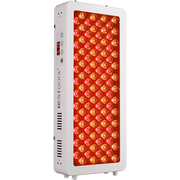









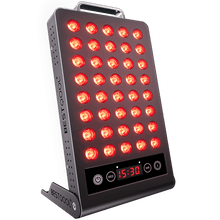
 Small
Small
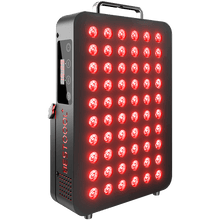
 Moderate
Moderate
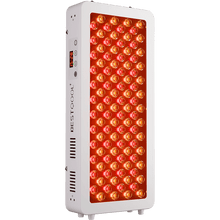
 Moderate
Moderate
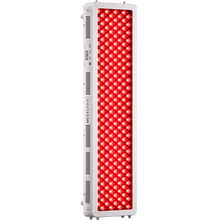
 Moderate
Moderate

 Full
Full



